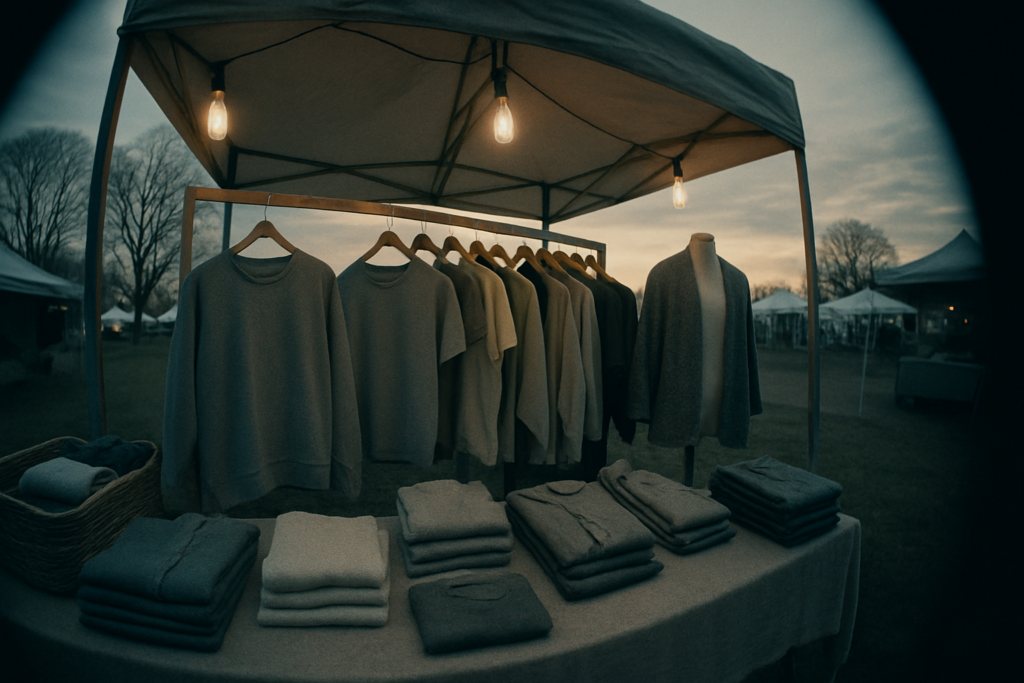Understanding Sustainable Fashion
Sustainable fashion aims to minimize the environmental impact of clothing production. It encompasses ethical manufacturing, eco-friendly materials, and conscious consumer habits.
What Is Sustainable Fashion?
Sustainable fashion involves creating apparel with minimal harm to the environment. This includes:
- using organic
- recycled materials
- ensuring fair labor practices
Brands like Patagonia and Reformation lead the way with transparent supply chains and eco-friendly processes. The Fashion Transparency Index ranks companies based on their sustainability efforts.
Why Is Sustainable Fashion Important?
Sustainable fashion reduces waste and conserves resources. Traditional fashion practices contribute to significant pollution and waste, with textile production accounting for 10% of global carbon emissions (Ellen MacArthur Foundation).
Supporting sustainable brands not only lessens environmental damage but also promotes ethical labor standards, ensuring workers get fair wages and safe conditions.
How to Identify Sustainable Fashion Brands

Finding sustainable fashion brands involves knowing what to look for in their practices and certifications. Several factors help determine a brand’s commitment to sustainability.
Evaluating Brand Sustainability Practices
Check if brands use eco-friendly materials like organic cotton, recycled polyester, or Tencel. Transparent supply chains indicate ethical labor practices and resource use.
Look for detailed reporting on environmental impacts and initiatives to reduce waste, water use, and carbon emissions. Brands that publish annual sustainability reports often demonstrate commitment.
Certifications and Standards to Look For
Certifications can help verify a brand’s sustainability claims.
- The Global Organic Textile Standard (GOTS) ensures organic material production.
- Fair Trade Certified confirms fair labor practices and wages.
- OEKO-TEX Standard 100 tests for harmful substances in textiles.
- B Corp Certification considers overall social and environmental performance.
Checking for these certifications can assure sustainable fashion choices.
Tips for Making Sustainable Fashion Choices
Sustainable fashion choices positively impact the environment. Here are some strategies to make more eco-friendly decisions.
Choosing Quality Over Quantity
Investing in quality items reduces the need for frequent replacements. High-quality clothing lasts longer, which minimizes waste and conserves resources.
For instance, choose well-made basics from brands that prioritize durability and craftsmanship. Look for natural materials like organic cotton, wool, and linen, which offer longevity and biodegradability.
Embracing Second-Hand and Vintage Clothing
Opt for second-hand and vintage clothing to reduce demand for new production. Thrift stores and online platforms like ThredUp, Poshmark, and Depop provide access to a wide range of pre-owned garments.
Vintage pieces often feature unique designs and superior craftsmanship. Buying used clothing extends the life of each piece, significantly lowering its environmental footprint.
Maintaining a Sustainable Wardrobe
Maintaining a sustainable wardrobe extends the lifespan of your clothing, reducing waste. By following specific practices, it’s possible to keep your wardrobe eco-friendly.
Care and Repair Tips
Proper care and timely repairs maximize garment longevity. Washing clothes in cold water conserves energy and prevents fabric damage. Using a line to dry clothes minimizes heat-related wear.
Repairing small issues like loose buttons or minor tears avoids the need for replacements. Simple sewing kits or local tailors can address these issues effectively. A stitch in time saves nine, preserving the garment’s life span and reducing waste.
Upcycling and Recycling Old Clothes
Upcycling transforms old clothes into new items. For instance, turning a worn-out denim jacket into a stylish tote bag breathes new life into the fabric. This reduces reliance on purchasing new materials and fosters creativity.
Recycling involves donating clothes to thrift stores or recycling centers. Some brands offer take-back programs for old items, ensuring they’re recycled responsibly. This decreases the clothing waste ending up in landfills and supports a circular fashion economy.




